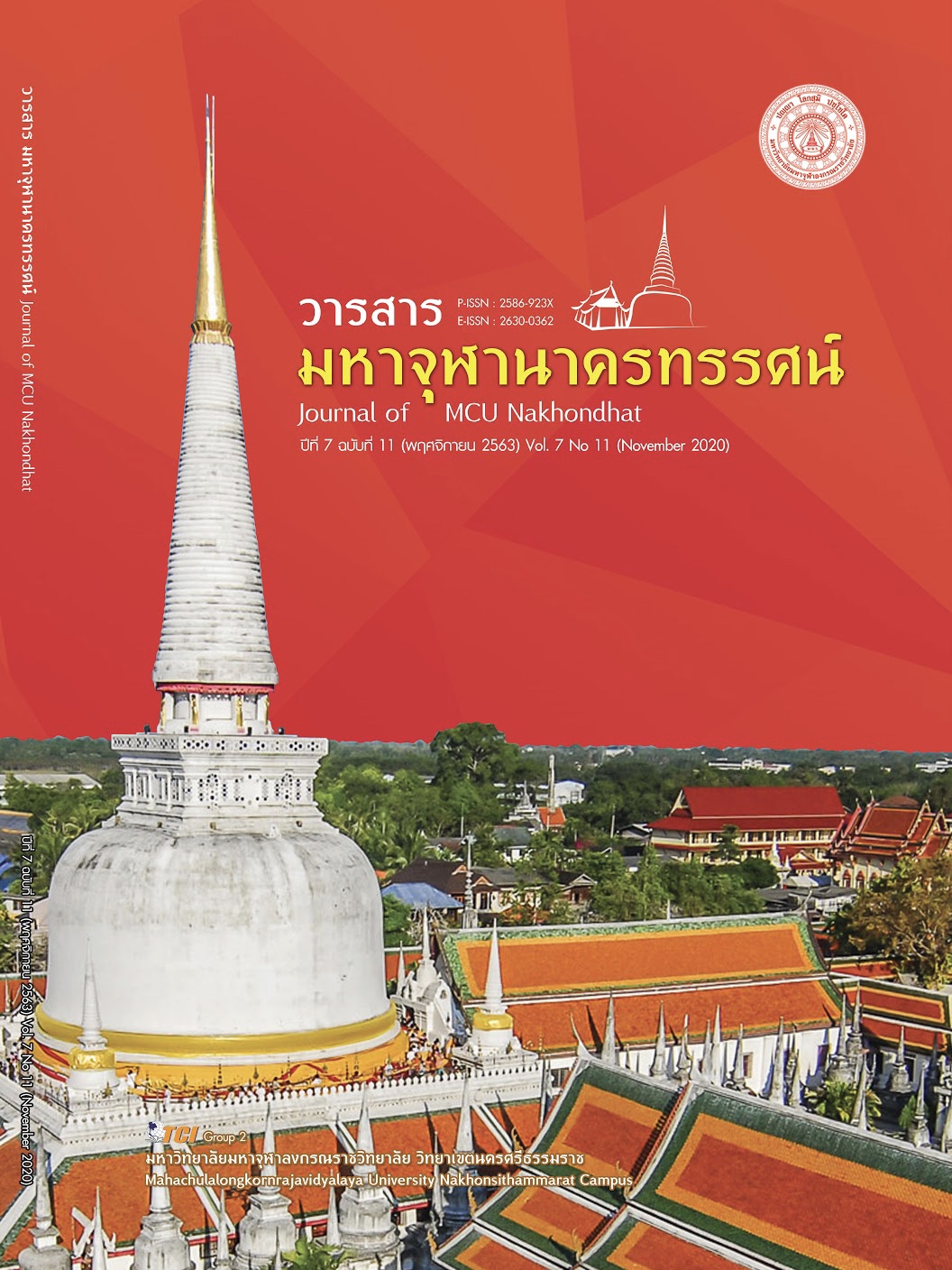INTEGRATING BUDDHIST PROPAGANDA WITH THE SRIWICHAI BUDDHIST ART IN THAI SOCIETY
Main Article Content
Abstract
This research article objective 1) To study the forms of Buddhism propagation 2) To study the Sriwichai style of Buddhist art in Thai society 3) To the pattern of Buddhism propagation with the Sriwichai style Buddhist art in Thai society. This research is qualitative. Have a documented study In - depth interview data analysis and presenting descriptive analysis. The results of the study were as follows: 1) Buddhism propagation model to want the recipient Understand the principles and get the most benefit (Nirvana) by choosing methods that suit the target group and choose a format Suitable for people Match the character of that person. 2) Sriwichai Buddhist art in Thai society, built around the 12 - 18 Buddhist century, which has played an important role in the spread of Buddhism to the present, which is divided into two categories, architecture and sculpture, painting is not yet apparent in Thai society. 3) Integrating the pattern of Buddhism propagation with the Sriwichai style Buddhist art in Thai society with elements of religion to spread Buddhism to the public Leading to good conduct Build understanding of Buddhism then link to religious teachings to develop the mind of a religious person this leads to the practice of being a Buddha, while religious places will focus on the Sriwichai Buddhist art at Thung Siet Temple, but need to develop into a more sustainable teaching medium. Live with the principles contributing to the mental development of the participants in the area and the ordinance is integrated with the development of life from birth to death, so it is the duty of the heir to develop himself. Until being able to integrate religious elements into teaching media for further development of oneself and the public.
Article Details
References
ไพโรจน์ คุ้มไพโรจน์. (2553). พุทธประวัติจากสังเวชนียสถาน. กรุงเทพมหานคร: องค์การค้าคุรุสภา.
ชยาภรณ์ สุขประเสริฐ. (2559). พุทธศิลป์: ถิ่นไทย ศิลปกรรมเพื่อพระพุทธศาสนา. วารสารพุทธอาเซียนศึกษา, 1(2), 59-74.
ปัญญา เทพสิงห์. (2548). ศิลปะเอเชีย. กรุงเทพมหานคร: โรงพิมพ์แห่งจุฬาลงกรณ์มหาวิทยาลัย.
พระครูสังฆรักษ์ศุภณัฐ ภูริวฑฺฒโน. (2561). การตีความภาพพุทธศิลป์ที่ปรากฏในเอกสารโบราณของจังหวัดลำปาง. วารสารวิทยาลัยสงฆ์นครลำปาง, 7(2), 230-238.
พระครูสิริปริยัตยานุศาสก์. (2561). กระบวนการเผยแผ่พระพุทธศาสนา และวัฒนธรรมไทยของพระสงฆ์ไทย ในประเทศอินเดีย - เนปาล. วารสารพุทธศาสตร์ศึกษา, 9(1), 121-134.
พระศรีพัชโรดม. (2560). รูปแบบการเผยแผ่พระพุทธศาสนาของพระสงฆ์ในสังคมไทย. วารสารบัณฑิตศึกษาปริทรรศน, 13(ฉบับพิเศษ), 335-346.
พิพิธภัณฑ์หอพุทธศิลป์ มหาวิทยาลัยมหาจุฬาลงกรณราชวิทยาลัย วิทยาเขตนครราชสีมา. (2558). ศิลปะศรีวิชัย (พุทธศตวรรษที่ 13-18). เรียกใช้เมื่อ 13 ตุลาคม 2563 จาก http://nkr.mcu.ac.th/buddhasil/?p=100
สมพร ไชยภูมิธรรม. (2543). ปางพระพุทธรูป. กรุงเทพมหานคร: ต้นธรรม.
สุภางค์ จันทวานิช. (2540). วิธีวิจัยเชิงคุณภาพ. กรุงเทพมหานคร: โรงพิมพ์แห่งจุฬาลงกรณ์มหาวิทยาลัย.


